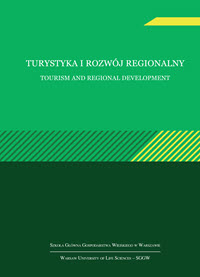Main Article Content
Article Details
ActNow for Zero Waste Fashion. Sustainable Development Goals (2019). United Nations. Pobrano z: https://www.un.org/sustainabledevelopment/blog/2019/08/actnow-for-zero-waste-fashion (dostęp: 20.05.2025).
Bartl, A., Ipsmiller, W. (2023). Fast fashion and the Circular Economy: Symbiosis or antibiosis? Waste Management & Research, 41 (3), s. 497–498. DOI: https://doi.org/10.1177/0734242X221149639
Buzzo, A., Abreu, M. J. (2019). Fast Fashion, Fashion Brands & Sustainable Consumption, Springer.
Cayaban, C. J. G., Prasetyo, Y. T., Persada, S. F., Borres, R. D., Gumasing, M. J. J., Nadlifatin, R. (2023).
The Influence of Social Media and Sustainability Advocacy on the Purchase Intention of Filipino Consumers in Fast Fashion. Sustainability, 15 (11), 8502. DOI: https://doi.org/10.3390/su15118502
Circular Economy in Fashion Industry, Sustainable Fashion EPR, UK. Reconomy. Pobrano z: https://www.reconomy.com/2024/09/03/the-state-of-the-circular-economy-in-the-fashion-industry/ (dostęp: 10.02.2025).
Consultancy.uk (2022). Kearney: Patagonia the world’s most circular fashion retail brand. Consultancy. uk. UK consulting industry platform. Pobrano z: https://www.consultancy.uk/news/31228/kearney-finds-patagonia-to-be-worlds-most-circular-brand
Dissanayake, D., Weerasinghe, D. (2021). Towards Circular Economy in Fashion: Review of Strategies, Barriers and enablers. Circular Economy and Sustainability, 2 (1), s. 25–45. DOI: https://doi.org/10.1007/s43615-021-00090-5
Drennan, K. (2015). Picking Up the Threads. Alternatives Journal, 41 (3), s. 21–23. Pobrano z: https://www.proquest.com/openview/bc7c78907165a64fff8d73e4994b8fe4/1?pq-origsite=gscholar&cbl=35934 (dostęp: 10.02.2025)
Dzhengiz, T., Haukkala, T., Sahimaa, O. (2023). (Un)Sustainable transitions towards fast and ultra-fast fashion. Fash Text, 10, 19. DOI: https://doi.org/10.1186/s40691-023-00337-9
Ellen MacArthur Foundation, Rethinking Business Models for a Thriving Fashion Industry (2022).
Pobrano z: https://ellenmacarthurfoundation.org/fashion-business-models/overview (dostęp: 18.05.2025).
Fashion’s tiny hidden secret (2019). UNEP. Pobrano z: http://www.unep.org/news-and-stories/story/fashions-tiny-hidden-secret (dostęp: 8.02.2025).
Garcia-Ortega, B., Galan-Cubillo, J., Llorens-Montes, F. J., De-Miguel-Molina, B. (2023). Sufficient consumption as a missing link toward sustainability: The case of fast fashion. Journal of Cleaner Production, 399 (1), 136678. DOI: https://doi.org/10.1016/j.jclepro.2023.136678
Gardetti, M. A. (2019). 1 – Introduction and the concept of circular economy. W: S. S. Muthu (red.). Circular Economy in Textiles and Apparel. Woodhead Publishing, Cambridge, s. 1–11. DOI: https://doi.org/10.1016/B978-0-08-102630-4.00001-7
Hageman, E., Kumar, V., Duong, L., Kumari, A., McAuliffe, E. (2024). Do fast fashion sustainable business strategies influence attitude, awareness and behaviours of female consumers? Business Strategy and the Environment, 33 (2), s. 1081–1098. DOI: https://doi.org/10.1002/bse.3545
Jones, V., Podpadec, T. (2023). Young people, climate change and fast fashion futures. Environmental Education Research, 29 (11), s. 1692–1708. DOI: https://doi.org/10.1080/13504622.2023.2181269
Khare, A. (2019). Green apparel buying: Role of past behavior, knowledge and peer influence in the assessment of green apparel perceived benefits. Journal of International Consumer Marketing, 35 (1), s. 109–125. DOI: https://doi.org/10.1080/08961530.2019.1635553
Krukowska, M. (2022). Moda na cyrkularność. Gospodarka obiegu zamkniętego. Pobrano z: https://www.forbes.pl/biznes/gospodarka-cyrkularna-obieg-zamkniety-odpadami/7cdvc83 (dostęp: 12.02.2025).
MacGregor Pelikánová, R., Sani, M. (2023). Luxury, slow and fast fashion: A case study on the (un)sustainable creating of shared values. Equilibrium. Quarterly Journal of Economics and Economic Policy, 18 (3), s. 813–851. DOI: https://doi.org/10.24136/eq.2023.026
Manickam, P., Duraisamy, G. (2019). 4 – 3Rs and circular economy. W: S. S. Muthu (red.). Circular Economy in Textiles and Apparel. Woodhead Publishing, Cambridge, s. 77–93. DOI: https://doi.org/10.1016/B978-0-08-102630-4.00004-2
Myczkowska-Utrata, A. (2024). Moda cyrkularna – tempo zmian jest zbyt wolne. Pobrano z: https://ecoekonomia.pl/2024/11/27/moda-cyrkularna-tempo-zmian-jest-zbyt-wolne/ (dostęp: 12.02.2025).
Niinimäki, K., Peters, G., Dahlbo, H., Perry, P., Rissanen T., Gwilt A. (2020). The environmental price of fast fashion. Nat Rev Earth Environ, 1, s. 189–200. DOI: https://doi.org/10.1038/s43017-020-0039-9
Our vision of a circular economy for fashion (2023). Pobrano z: https://www.ellenmacarthurfoundation. org/our-vision-of-a-circular-economy-for-fashion (dostęp: 7.02.2025)
Papasolomou, I., Melanthiou, Y., Tsamouridis, A. (2022). The fast fashion vs environment debate: Consumers’ level of awareness, feelings, and behaviour towards sustainability within the fastfashion sector. Journal of Marketing Communications, 29 (2), s. 191–209. DOI: https://doi.org/10.1080/13527266.2022.2154059
Patagonia – na czym polega fenomen ekologicznej marki odzieżowej (2024). Pobrano z: https://www.sport-shop.pl/blog/patagonia-na-czym-polega-fenomen-ekologicznej-marki-odziezowej/ (dostęp: 12.02.2025).
Saha, K., Dey, P. K., Papagiannaki, E. (2021). Implementing circular economy in the textile and clothing industry. Business Strategy and the Environment, 30 (4), s. 1497–1530. DOI: https://doi.org/10.1002/bse.2670
Stal, H. I., Corvellec, H. (2022). Organizing Means–Ends Decoupling: Core–Compartment Separations in Fast Fashion. Business & Society, 61 (4), s. 857–885. DOI: https://doi.org/10.1177/00076503211001856
Szewczyk, M. (2017). Szanse na rozwój gospodarki okrężnej w przemyśle tekstylno-odzieżowym. Gospodarka w Praktyce i Teorii, 3 (48), s. 57–67.
Thomson D. (2021). Modpolis. Dlaczego to, co nosimy, ma znaczenie. Warszawa: Wydawnictwo Literackie.
Todeschini, B. V., Cortimiglia, M. N., Medeiros, J. F. (2020). Collaboration Practices in the Fashion Industry: Environmentally Sustainable Innovations in the Value Chain. Environmental Science & Policy, 106, s. 1–11. DOI: https://doi.org/10.1016/j.envsci.2020.01.003
UN launches drive to highlight environmental cost of staying fashionable (2019). UN News. Pobrano z: https://news.un.org/en/story/2019/03/1035161 (dostęp: 7.02.2025).
What Is Fast Fashion and Why Is It So Bad? (2022). Good on You. Pobrano z: https://goodonyou.eco/what-is-fast-fashion/ (dostęp: 27.02.2025).
Williams, E. (2022). Appalling or Advantageous? Exploring the Impacts of Fast Fashion From Environmental, Social, and Economic Perspectives. Journal for Global Business and Community, 13 (1). DOI: https://doi.org/10.56020/001c.36873
zatrważających statystyk dotyczących fast fashion (2024). Magazyn Biomasa. Pobrano z: https://magazynbiomasa.pl/10-zatrwazajacych-statystyk-dotyczacych-fast-fashion/ (dostęp: 20.05.2025).
Downloads
- Longina Chojnacka-Ożga, Aleksandra Ożga, Wojciech Ożga, Las jako miejsce aktywności fizycznej studentów , Turystyka i Rozwój Regionalny: Nr 23 (2025)
Możesz również Rozpocznij zaawansowane wyszukiwanie podobieństw dla tego artykułu.
- Agata Balińska, Wioletta Olejniczak, Wpływ pandemii COVID-19 na wybór miejsc zakwaterowania w trakcie wyjazdów turystycznych w Polsce , Turystyka i Rozwój Regionalny: Nr 17 (2022)
- Agata Balińska, Małgorzata Łukasiak, Wybrane metody wskaźnikowe w ocenie aplikacji Booking.com , Turystyka i Rozwój Regionalny: Nr 19 (2023)
- Ewa Jaska, Agata Balińska, Agnieszka Werenowska, Postawy pokolenia Z wobec zmian środowiskowych , Turystyka i Rozwój Regionalny: Nr 21 (2024)
- Agata Balińska, Wioletta Olejniczak, Pasażerski transport kolejowy w ocenie jego użytkowników , Turystyka i Rozwój Regionalny: Nr 10 (2018)
- Agata Balińska, Wioletta Olejniczak, Dominika Cymerman, Wymiary jakości transportu miejskiego aglomeracji warszawskiej w percepcji konsumentów , Turystyka i Rozwój Regionalny: Nr 14 (2020)
- Agata Balińska, Ewa Jaska, Agnieszka Werenowska, Wybrane zachowania odpowiedzialne środowiskowo i społecznie generacji Z w kontekście gospodarki dobra wspólnego , Turystyka i Rozwój Regionalny: Nr 21 (2024)
- Agata Balińska, Małgorzata Błaszczak, Przyrodniczo-społeczne dysfunkcje rozwoju turystyki w Tajlandii , Turystyka i Rozwój Regionalny: Nr 1 (2014)
- Agata Balińska, Sieciowe produkty turystyczne jako przykład przedsiębiorczości na obszarach wiejskich , Turystyka i Rozwój Regionalny: Nr 8 (2017)

Utwór dostępny jest na licencji Creative Commons Uznanie autorstwa 4.0 Międzynarodowe.





